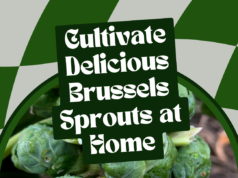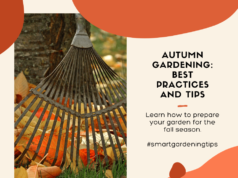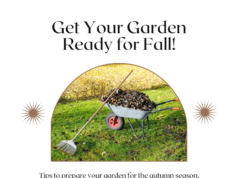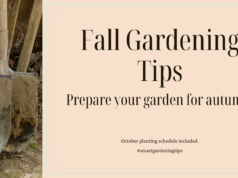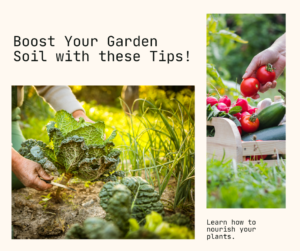
Your garden is a reflection of your commitment to cultivating beautiful and healthy plants. Ensuring ideal growing conditions is crucial for optimal plant growth and productivity. However, achieving optimal soil conditions can be challenging, especially for novice gardeners.
In this section, we’ll explore some of the top tips for improving the conditions of your garden soil. By following these tips, you’ll be able to create a healthy and productive garden that showcases your gardening skills.
Key Takeaways:
- Improving the conditions of your garden soil is key to promoting optimal plant growth and productivity.
- Garden improvement tips include soil enrichment, proper watering methods, pest control, and maximizing sunlight exposure.
- Essential tools and regular garden maintenance are crucial for long-term garden health.
- Promoting biodiversity and understanding seasonal garden tasks are essential for creating a thriving garden environment.
- With these tips, you can create a healthy and productive garden that showcases your commitment to gardening.
Soil Enrichment Techniques for a Healthy Garden
Proper soil enrichment is essential for a thriving garden. When you enhance your garden, you optimize your garden conditions, increase the health of your garden, and create a healthy garden that promotes optimal plant growth and productivity. Here are some gardening enhancements to help you improve your garden health.
Composting
Composting is a natural process that transforms organic waste into nutrient-rich soil. It helps to improve soil structure, retain moisture, and promote healthy plant growth. Start by gathering organic waste such as fruit and vegetable scraps, coffee grounds, and eggshells. Mix them with dry materials such as leaves and grass clippings, and let the compost sit for a few months until it turns into a dark, crumbly material that smells earthy. You can use the compost as a natural fertilizer for your plants.
Mulching
Mulching involves covering the soil with organic material such as leaves, straw, or wood chips. It helps to retain moisture, regulate soil temperature, prevent weed growth, and provide nutrients to the soil as the organic material decomposes. Apply a layer of mulch around your plants, making sure to leave a small gap around the base of each plant to prevent rot.
Crop Rotation
Crop rotation is the practice of growing different crops in the same area of the garden in consecutive years. It helps to replenish soil nutrients, reduce soil-borne diseases, and maintain soil structure. Start by dividing your garden into sections and planting a different crop in each section each year. For example, you could plant beans in one section, tomatoes in another, and corn in a third. This way, you won’t deplete the nutrients from the soil and will keep your garden healthy.
Green Manure
Green manure involves planting a cover crop such as clover or rye grass to enrich the soil during fallow periods. The cover crop is allowed to grow and is then tilled under the soil to add nutrients and organic matter. The added organic matter helps to improve soil structure, retain moisture, and promote healthy plant growth. You can also use green manure to suppress weed growth and prevent soil erosion.
Watering Methods for Plant Growth
In order to promote healthy growth in your garden, proper watering methods are crucial. By following these garden maintenance tips for watering your plants, you can ensure optimal hydration and plant health.
The frequency of watering depends on several factors, including the type of soil, the type of plants, and the climate. Generally, it’s better to water deeply and less frequently rather than shallowly and frequently. This helps to encourage strong root growth and prevent water from pooling on the surface of the soil.
The amount of water you should use depends on the size of your plants and their specific water requirements. A good rule of thumb is to use about one inch of water per week, either from rainfall or irrigation. However, be sure to check the soil regularly to ensure the moisture level is adequate.
The timing of watering is also important. To avoid evaporation and ensure maximum water uptake by the plants, it’s best to water in the early morning or late evening. This also helps prevent water from sitting on the leaves, which can lead to fungal growth.
When watering your garden, consider using organic gardening practices. This can include collecting rainwater in barrels or using a drip irrigation system. These techniques help conserve water while also reducing the risk of soil erosion and water runoff.
“Proper watering is key for a healthy garden. By following these tips for watering your plants, you can ensure your garden thrives!”
Pest Control Strategies for a Thriving Garden
Dealing with pests is a common challenge in gardening, but it’s important to find natural pest control strategies to protect your plants without harming the environment. Here are some gardening tips and pest control strategies to help you maintain a healthy and pest-free garden:
Companion Planting
Companion planting is the practice of planting certain plants together to repel pests or attract beneficial insects. For example, planting marigolds with tomatoes can help repel nematodes, while planting basil with tomatoes can improve the flavor and repel flies. Consider researching companion planting options for the plants in your garden to create a natural pest control solution.
Organic Sprays
Organic sprays made from natural ingredients like garlic, neem oil, and hot pepper can be effective at repelling pests. These sprays are safe for plants and the environment, making them a great alternative to chemical pesticides. However, it’s important to note that organic sprays should be used sparingly and only when necessary, as they can also harm beneficial insects.
Physical Barriers
Physical barriers like row covers, netting, and fencing can be effective at keeping pests away from your plants. Row covers can protect plants from insects like flea beetles and cabbage moths, while netting can keep birds and larger pests like rabbits away. Fencing can be used to keep larger animals like deer out of your garden.
Hand Picking
Hand picking pests like caterpillars, slugs, and snails can be time-consuming but effective, especially for smaller gardens. This method is best used in conjunction with other pest control strategies, as it can be difficult to fully eliminate pests by hand picking alone.
Weed Management
Weeds can provide a hiding place for pests, allowing them to go unnoticed and multiply. Keeping your garden weed-free can help prevent pest infestations and create a healthy environment for your plants. Consider using organic mulch or hand weeding to control weeds.
Implementing these pest control strategies and maintaining a regular garden maintenance routine can help keep your garden healthy and pest-free. Remember to take a natural approach to pest control and avoid using harmful chemicals that can harm the environment and your health.
Maximizing Sunlight Exposure for Plant Health
Proper sunlight exposure is essential for the health and growth of your plants. By optimizing the amount of sunlight your garden receives, you can significantly enhance its productivity and appearance. Here are some garden maintenance tips for maximizing sunlight exposure:
Plant Placement
Choosing the right location for your plants is crucial for maximizing sunlight exposure. When planning your garden, consider the position of the sun throughout the day and strategically plant your crops in areas that receive the most sunlight. For instance, vegetables and fruits require full sun exposure to thrive and should be planted in areas that receive at least six hours of direct sunlight per day.
Reflective Surfaces
Reflective surfaces, such as aluminium foil or white plastic, can be used to increase sunlight exposure to your plants. These surfaces reflect sunlight back onto plants, allowing them to absorb more light and promote healthy growth. Be sure to position these surfaces in areas that receive direct sunlight.
Shade Management
While sunlight is essential, it’s also essential to manage shade in your garden. Too much shade can be harmful to some plants, while others, such as lettuce and spinach, thrive in partial shade. Consider planting shade-tolerant crops in shaded areas of your garden and pruning back trees or bushes that may be blocking sunlight.
Organic Gardening Practices
In addition to maximizing sunlight exposure, incorporating organic gardening practices can also promote healthy plant growth. By using organic fertilizers and soil conditioners, you can create a rich and fertile soil that allows plants to absorb nutrients more efficiently. This enhances plant growth and increases their resistance to pests and diseases. Avoid using synthetic fertilizers, which can harm soil health and damage the environment.
Essential Tools for Effective Gardening
If you want to improve your gardening techniques and garden maintenance, having the right tools is essential. Here is a list of essential tools for gardening:
| Tool | Description |
|---|---|
| Hand trowel | A small tool used for digging small holes and transferring plants. |
| Pruners | Used for trimming plants, cutting stems, and pruning trees. |
| Garden fork | A tool used for breaking up soil, compost, and turning soil over. |
| Garden hoe | Used for shaping the soil, removing weeds, and harvesting root crops. |
| Garden rake | Used for leveling soil, removing debris and collecting leaves. |
| Watering can or hose | Used for watering plants, shrubs, and garden beds. |
| Garden gloves | To protect your hands and fingers from dirt, thorns, and rough surfaces |
| Garden cart or wheelbarrow | Used to move soil, compost, mulch, and other gardening materials around your garden. |
These essential tools can make your gardening tasks easier and more efficient. With the right tools on hand, you can create a flourishing garden environment that promotes optimal plant growth, and, in turn, your garden maintenance. Before you start any gardening venture, make sure you have all the tools you need.
Garden Maintenance for Long-Term Growth
Now that your garden is thriving, it’s important to maintain its health for long-term growth. By following these plant care strategies, you can ensure your garden stays healthy and productive throughout the seasons.
Regular Weeding
Weeds can compete with your plants for water and nutrients, so it’s essential to regularly remove them. Use a hoe or hand trowel to gently remove weeds, being careful not to disturb your plants’ roots. Regular weeding also helps prevent pests and diseases from taking hold in your garden.
Fertilizing
Soil enrichment methods, such as adding compost or organic fertilizers, can help optimize garden health. Fertilizing provides essential nutrients to your plants, helping them grow strong and healthy. Apply a balanced fertilizer once a month during the growing season to ensure your plants receive proper nutrition.
Pruning
Pruning helps stimulate plant growth and promote better air circulation. Use a sharp pair of pruners to remove dead or damaged branches, ensuring proper cuts just above the healthy bud or stem. Pruning also helps maintain the shape and size of your plants, keeping them healthy and full.
Mulching
Mulching helps retain moisture in the soil, regulate soil temperature, and suppress weed growth. Apply a layer of organic mulch, such as leaves or straw, around your plants, being careful not to cover the stems or leaves. Mulching also helps improve soil structure and increase soil fertility.
Seasonal Care
Seasonal garden maintenance is vital for ensuring long-term growth and productivity. In the spring, apply organic fertilizer and compost to your garden beds, and plant early-season crops. During the summer, water your garden regularly, and harvest crops as they mature. In the fall, remove spent plants, and add a fresh layer of mulch. In the winter, protect your garden from freezing temperatures by covering your plants with blankets or burlap sacks.
By implementing these garden maintenance tips and soil enrichment methods, you can enhance garden growth and optimize garden health. Remember to care for your plants regularly and remain patient as you watch your garden thrive.
Promoting Biodiversity in Your Garden
Biodiversity is key to a healthy and thriving garden ecosystem. By creating a balanced environment, you can promote plant health, natural pest control, and soil fertility. Here are some garden revitalization tips to enhance biodiversity in your garden:
- Plant native species: Native plants are adapted to your region’s climate and soil, making them ideal for promoting biodiversity. They also provide habitat and food for local wildlife, such as birds and butterflies.
- Diversify your garden: Plant a variety of plants with different colors, textures, and growth habits. This creates a diverse habitat that attracts a range of pollinators and beneficial insects.
- Create habitats: Incorporate features such as birdhouses, bat boxes, and bee hotels to provide shelter and nesting sites for wildlife.
- Reduce chemical use: Chemical pesticides and fertilizers can harm beneficial insects and microorganisms, as well as pollute waterways. Instead, opt for organic and natural pest control methods, and add compost to your soil for natural fertilization.
By promoting biodiversity, you can create a healthy and resilient garden environment that supports the growth and productivity of your plants.
Seasonal Garden Tasks and Plant Care
To keep your garden healthy and productive throughout the year, you need to perform seasonal garden maintenance tasks and properly care for your plants.
Spring Planting
As the weather warms up, it’s time to start planting your spring crops. Begin by preparing your soil with compost and other organic matter to provide your plants with proper nutrients. Make sure to water your plants regularly and remove any weeds that may compete for resources. As your plants start to grow, thin them out to promote healthy growth and allow for adequate spacing.
Summer Watering Routines
Summer is the time when temperature and humidity levels rise, and your plants need more frequent watering. Make sure your plants receive an inch of water per week, either from rainfall or irrigation. Proper watering techniques can include using a soaker hose or watering in the morning to prevent midday water evaporation.
Fall Cleanup
As the growing season comes to an end, it’s time to clean up your garden. Remove any dead plant material and add it to your compost pile. Harvest your remaining crops, and prepare your soil for winter by sowing cover crops such as rye or clover.
Winter Plant Care
During the winter months, your garden may seem dormant, but proper care is essential to ensure the health of your plants. Protect your soil from erosion by adding a layer of mulch, and continue to water your plants during any dry spells. Prune any dead or diseased branches from your trees and shrubs.
Plant Nutrition
Proper plant nutrition is crucial for healthy growth and productivity. Test your soil periodically to determine any nutrient deficiencies and add the necessary fertilizers to your soil. You can also add organic matter such as compost or manure to improve soil fertility.
Watering Routines
Watering is an essential component of plant care, but it’s crucial to do it properly. Overwatering can lead to root rot and other issues, while underwatering can cause plants to wilt and wither. Water your plants to a depth of six inches once a week, or twice a week during periods of extreme heat or drought. Make sure to water at the base of the plant rather than spraying the leaves to prevent fungal diseases.
Weed Prevention Methods
Weeds can quickly take over your garden and compete with your plants for resources. To prevent weeds, mulch around your plants to prevent weed growth, and hand-pull any weeds that do appear. You can also use organic herbicides or vinegar sprays to prevent weed growth.
Proper Pruning Techniques
Pruning is essential for maintaining the health and shape of your plants. Make sure to use clean, sharp pruning shears, and prune your plants during their dormant periods. Remove any dead or diseased branches, and shape your plants as desired. Avoid over-pruning, as this can stunt plant growth and reduce productivity.
Creating a Thriving Garden Environment
Creating a thriving garden environment requires considering several factors, such as soil preparation, weed control, pest management, and irrigation systems. By utilizing the right tools, techniques, and design principles, you can build a garden that is not only productive but also visually appealing. Here are some tips to help you achieve this:
Soil Preparation
The first step to creating a healthy garden environment is to prepare the soil properly. Start by testing your soil to determine its pH level and nutrient content. Based on the test results, you can add organic matter such as compost or manure to improve soil fertility. Additionally, choose plants that are suitable for your soil type to ensure optimal growth.
Weed Control
Weeds can compete with your plants for water and nutrients, so it’s essential to control them effectively. One option is to use organic weed control methods such as hand weeding or mulching, which will prevent weed growth and nourish the soil simultaneously. Alternatively, you could use herbicides, but be careful as they can be harmful to beneficial insects and wildlife.
Pest Management
Dealing with pests can be a challenge, but it’s important to avoid using harmful chemicals that could damage your plants and the environment. Instead, utilize natural pest control methods such as companion planting or organic sprays to protect your garden from insects and other pests.
Irrigation System
Plants require consistent hydration to thrive, so it’s important to have a reliable irrigation system. Consider using a drip irrigation system or soaker hoses that deliver water directly to the roots, reducing water waste significantly. Additionally, water your plants in the morning to prevent evaporation and reduce the risk of fungal diseases.
Seasonal Planting Guide
Planting your garden according to the season is essential for optimal growth and productivity. Use a seasonal planting guide that outlines the best times to plant specific crops in your area. This will help you plan your garden more effectively and maximize your harvest.
Gardening Tools
Having the right tools is essential for efficient and effective gardening. Invest in quality gardening tools such as hand trowels, pruners, and shovels, as well as protective gear such as gloves and hats. Proper maintenance of your tools will ensure they last longer and perform better.
Garden Design
The layout and design of your garden can significantly impact its productivity and visual appeal. Consider utilizing companion planting techniques to create a healthy and biodiverse garden ecosystem. Additionally, incorporate hardscaping features such as walkways or trellises to add interest and functionality to your garden.
Garden Care
Regular garden maintenance is essential for long-term growth and health. Tasks such as weeding, fertilizing, and pruning ensure your garden remains vibrant and productive throughout the seasons. Make a garden care schedule and stick to it to ensure that your garden receives the necessary attention it needs.
By following these tips, you can create a thriving garden environment that promotes optimal plant growth and productivity. Remember to pay attention to the needs of your garden and adapt accordingly. Happy gardening!
FAQ
What are some tips for improving the conditions of my garden soil?
There are several tips you can follow to enhance the conditions of your garden soil. Some of the top tips include adding compost or organic matter, practicing crop rotation, using mulch, avoiding over-watering, and testing your soil pH regularly.
How can I enrich my garden soil for a healthy garden?
There are various techniques you can use to enrich your garden soil. Some effective methods include using compost, incorporating organic fertilizers, practicing cover cropping, adding beneficial soil amendments like bone meal or worm castings, and avoiding the use of synthetic chemicals.
What are the best watering methods for promoting plant growth?
Proper watering is crucial for the health of your plants. It’s important to water deeply and infrequently, allowing the soil to dry out slightly between waterings. Watering in the morning or evening when temperatures are cooler is also recommended. Additionally, using a soaker hose or drip irrigation system can help ensure water reaches the plant roots more efficiently.
How can I control pests in my garden without using harmful chemicals?
Natural pest control methods can be effective in maintaining a pest-free garden. Some strategies include practicing companion planting, attracting beneficial insects like ladybugs or praying mantises, using organic sprays made from ingredients like neem oil or garlic, and regularly inspecting your plants for signs of pests.
How can I maximize sunlight exposure in my garden?
To maximize sunlight exposure, it’s important to choose the right location for your plants, ensuring they receive at least 6-8 hours of direct sunlight each day. Proper spacing and pruning can also help prevent shading between plants. Additionally, using reflective surfaces like white stones or mulch can help redirect sunlight onto the plants.
What are the essential tools for effective gardening?
There are several essential tools every gardener should have. These include a hand trowel, pruners, a garden fork, a watering can or hose, a rake, and a shovel. Depending on your specific gardening needs, other tools like a wheelbarrow, a garden knife, or a hand cultivator may also be useful.
What should I include in my garden maintenance routine?
Regular garden maintenance is key to long-term growth. Some important tasks to include in your routine are weeding to prevent competition for nutrients, fertilizing to provide essential nutrients, and pruning to promote healthy growth. Additionally, monitoring for pests and diseases, and ensuring proper watering and mulching are all important aspects of garden maintenance.
How can I promote biodiversity in my garden?
Promoting biodiversity is important for a thriving garden ecosystem. You can do this by planting a variety of native plants, creating habitat features like bird feeders or insect hotels, and avoiding the use of pesticides that can harm beneficial insects and wildlife. Encouraging natural predators like birds or frogs can also help control pests naturally.
What are some seasonal garden tasks and plant care tips?
Different seasons require specific garden tasks. In spring, you can focus on planting and starting seeds indoors. Summer is the time for regular watering, weeding, and mulching. In the fall, you can clean up your garden beds, harvest crops, and prepare for winter. During winter, you can protect plants from frost and cold temperatures and plan for the upcoming gardening season.
How can I create a thriving garden environment?
Creating a thriving garden environment involves various factors. It’s important to prepare your soil properly, control weeds effectively, manage pests organically, install an efficient irrigation system, follow a seasonal planting guide, use the right gardening tools, pay attention to garden design principles, and practice regular garden care and maintenance.
Conclusion
Congratulations on learning these valuable tips and techniques for enhancing the health and productivity of your garden! By following these methods and utilizing the right tools and strategies, you can promote optimal garden conditions and create a thriving garden environment.
Remember to regularly maintain and care for your garden by implementing these gardening techniques. By doing so, you can ensure that your garden remains healthy and vibrant, enriching your outdoor space and providing you with a beautiful and sustainable environment for years to come.
We hope our article has been helpful in providing you with the strategies and tips you need to improve and maintain your garden’s health and productivity. Happy gardening!


